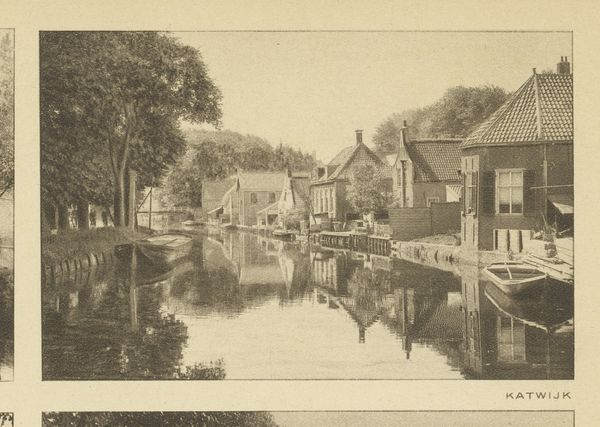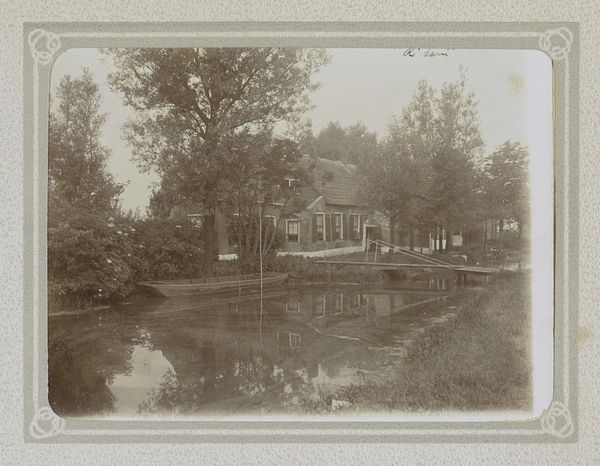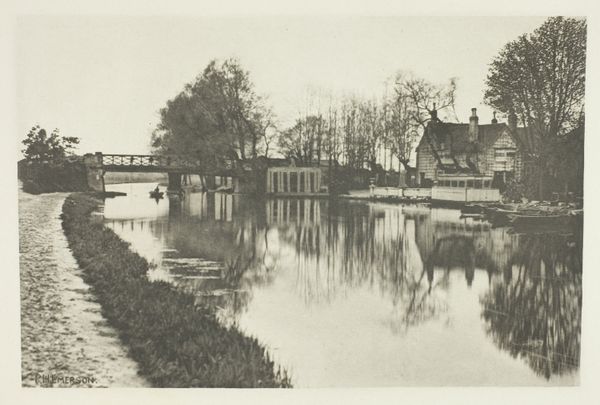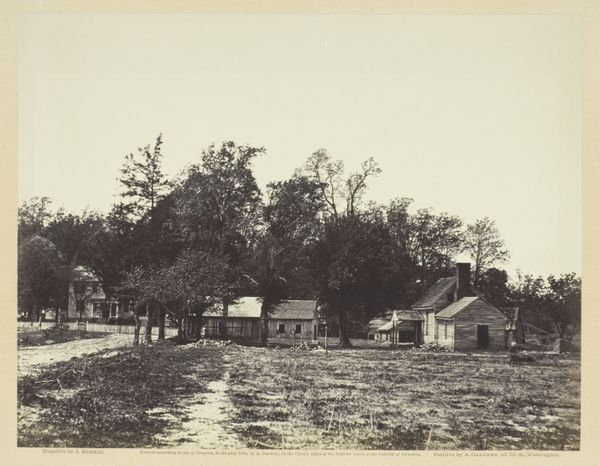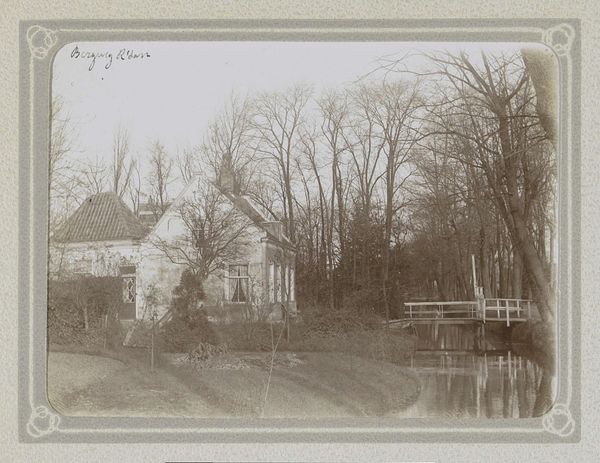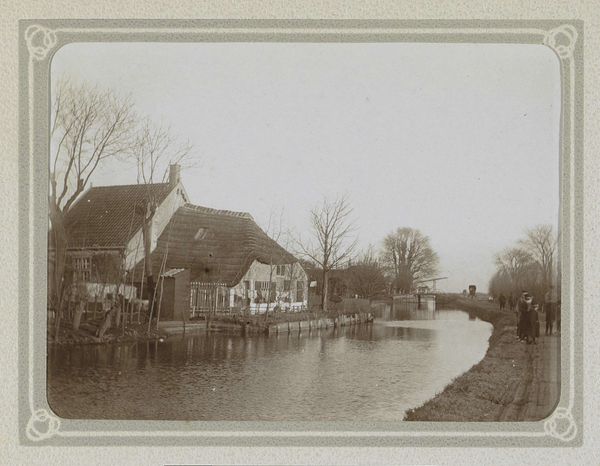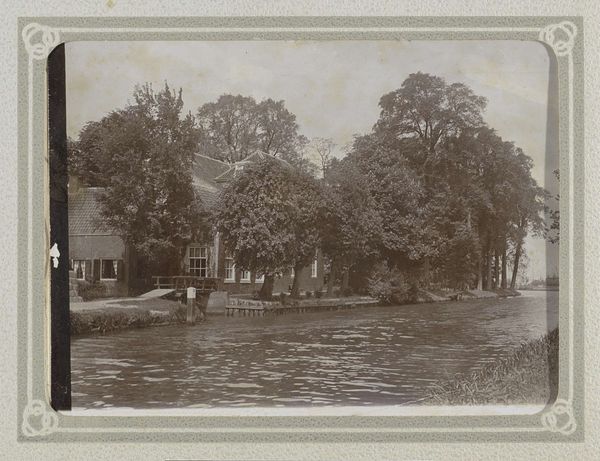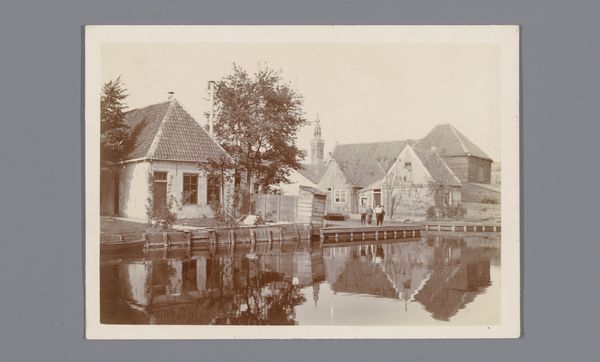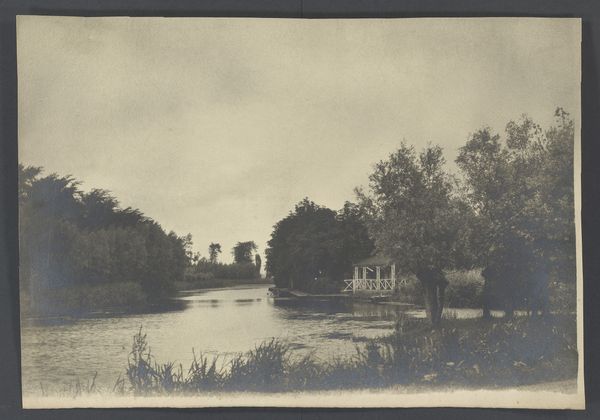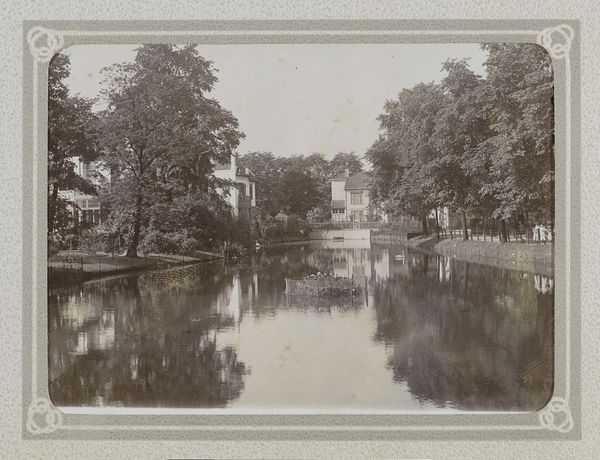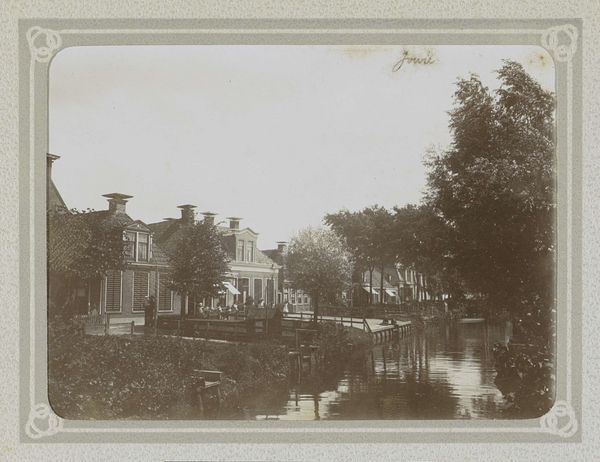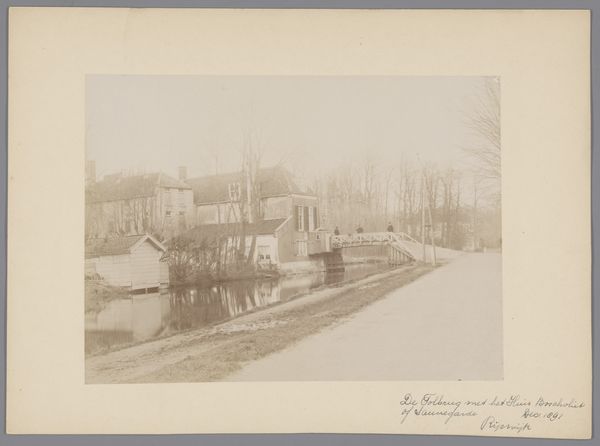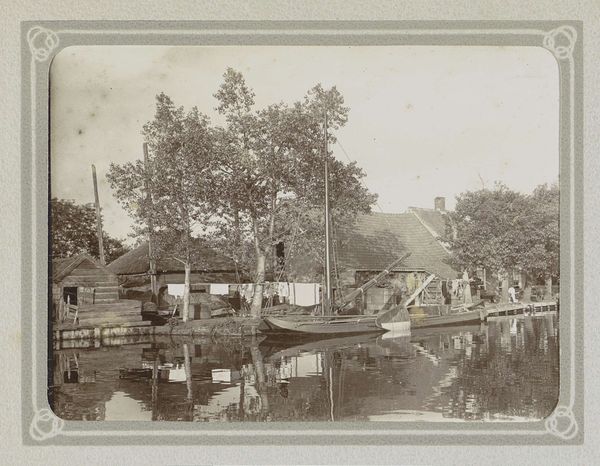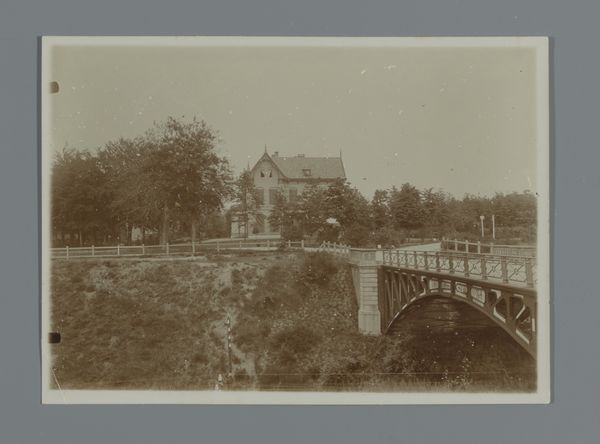
photography, gelatin-silver-print
#
pictorialism
#
landscape
#
photography
#
gelatin-silver-print
#
cityscape
Dimensions: height 70 mm, width 116 mm
Copyright: Rijks Museum: Open Domain
Curator: Here we have a gelatin silver print dating from before 1915, showing a vista of Breukelen along the Vecht river, simply called "Gezicht op Breukelen aan de Vecht." Editor: It feels like stepping into a half-remembered dream. Sepia-toned nostalgia… the light is so soft, it nearly dissolves the edges of the buildings and trees, creating an incredible, slightly haunting stillness. Curator: The softness comes from a Pictorialist aesthetic—it imitates the appearance of paintings with soft focus, tonal variation and an emphasis on atmosphere rather than detail. Pictorialism, emerging in the late 19th century, argued photography should be considered fine art. Editor: Absolutely, it definitely elevates a simple snapshot into something truly evocative. It almost looks like an impressionist painting. That gazebo sitting right on the water… I can almost hear faint music drifting from it, can't you? Curator: This image resonates within a complex web of cultural and historical factors. During the late 19th and early 20th centuries, Dutch artists were looking to define a national identity through landscape. Picturesque river scenes such as these evoked ideas of Dutch heritage, tradition, and tranquility during a time of social and technological change. Editor: Thinking about it like that makes it a statement about cultural identity at a specific time and place, instead of simply a nice scene. Knowing that definitely adds an extra layer. Curator: The fact that we do not know the photographer reinforces the idea that it’s the place, Breukelen, rather than an individual artist that matters most. It emphasizes the role of the town as a cultural touchstone. Editor: Still, somebody, somewhere felt this scene deserved more than a passing glance, it felt weighty with meaning. Makes you wonder who stopped, saw the beauty, and then clicked the shutter to share it with the world. What's your take? Curator: It is fascinating to consider the interplay of aesthetics, cultural identity, and the power of photography to capture a specific moment in time—while shaping public perception. Editor: Right, a world now gone, but lingering still in that hazy, melancholic silver. Very affecting.
Comments
No comments
Be the first to comment and join the conversation on the ultimate creative platform.
